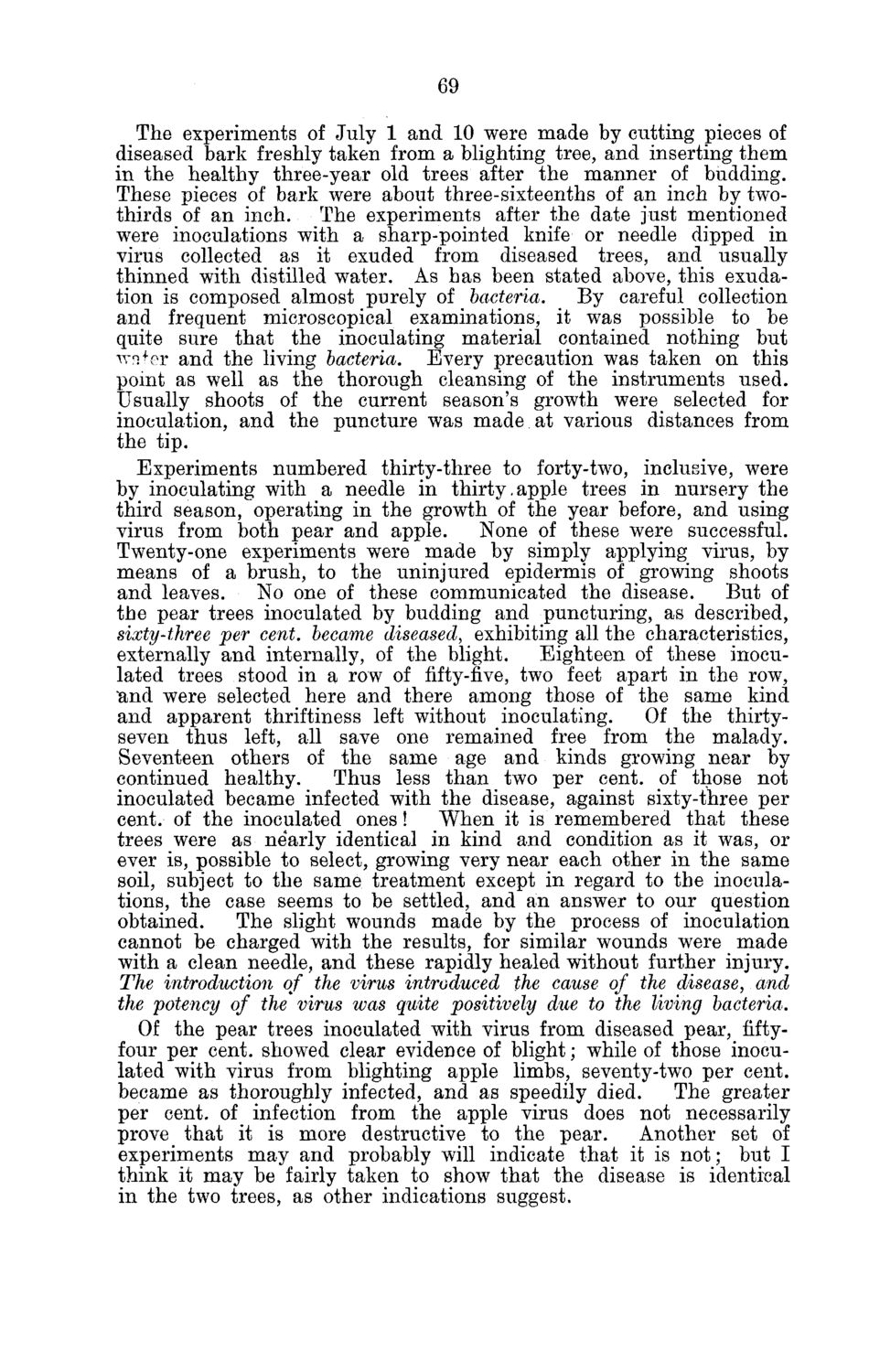| |
| |
Caption: Board of Trustees Minutes - 1880
This is a reduced-resolution page image for fast online browsing.

EXTRACTED TEXT FROM PAGE:
69 The experiments of July 1 and 10 were made by cutting pieces of diseased bark freshly taken from a blighting tree, and inserting them in the healthy three-year old trees after the manner of budding. These pieces of bark were about three-sixteenths of an inch by twothirds of an inch. The experiments after the date just mentioned were inoculations with a sharp-pointed knife or needle dipped in virus collected as it exuded from diseased trees, and usually thinned with distilled water. As has been stated above, this exudation is composed almost purely of bacteria. By careful collection and frequent microscopical examinations, it was possible to be quite sure that the inoculating material contained nothing but wnfer and the living bacteria. Every precaution was taken on this point as well as the thorough cleansing of the instruments used. Usually shoots of the current season's growth were selected for inoculation, and the puncture was made at various distances from the tip. Experiments numbered thirty-three to forty-two, inclusive, were by inoculating with a needle in thirty.apple trees in nursery the third season, operating in the growth of the year before, and using virus from both pear and apple. None of these were successful. Twenty-one experiments were made by simply applying virus, by means of a brush, to the uninjured epidermis of growing shoots and leaves. No one of these communicated the disease. But of the pear trees inoculated by budding and puncturing, as described, sixty-three per cent, became diseased, exhibiting all the characteristics, externally and internally, of the blight. Eighteen of these inoculated trees stood in a row of fifty-five, two feet apart in the row, land were selected here and there among those of the same kind and apparent thriftiness left without inoculating. Of the thirtyseven thus left, all save one remained free from the malady. Seventeen others of the same age and kinds growing near by continued healthy. Thus less than two per cent, of those not inoculated became infected with the disease, against sixty-three per cent, of the inoculated ones! When it is remembered that these trees were as nearly identical in kind and condition as it was, or ever is, possible to select, growing very near each other in the same soil, subject to the same treatment except in regard to the inoculations, the case seems to be settled, and an answer to our question obtained. The slight wounds made by the process of inoculation cannot be charged with the results, for similar wounds were made with a clean needle, and these rapidly healed without further injury. The introduction of the virus introduced the cause of the disease, and the potency of the virus was quite positively due to the living bacteria. Of the pear trees inoculated with virus from diseased pear, fiftyfour per cent, showed clear evidence of blight; while of those inoculated with virus from blighting apple limbs, seventy-two per cent, became as thoroughly infected, and as speedily died. The greater per cent, of infection from the apple virus does not necessarily prove that it is more destructive to the pear. Another set of experiments may and probably will indicate that it is not; but I think it may be fairly taken to show that the disease is identical in the two trees, as other indications suggest.
| |